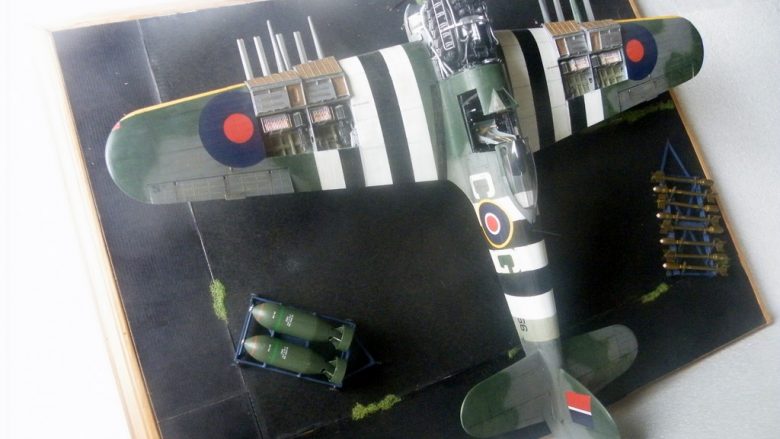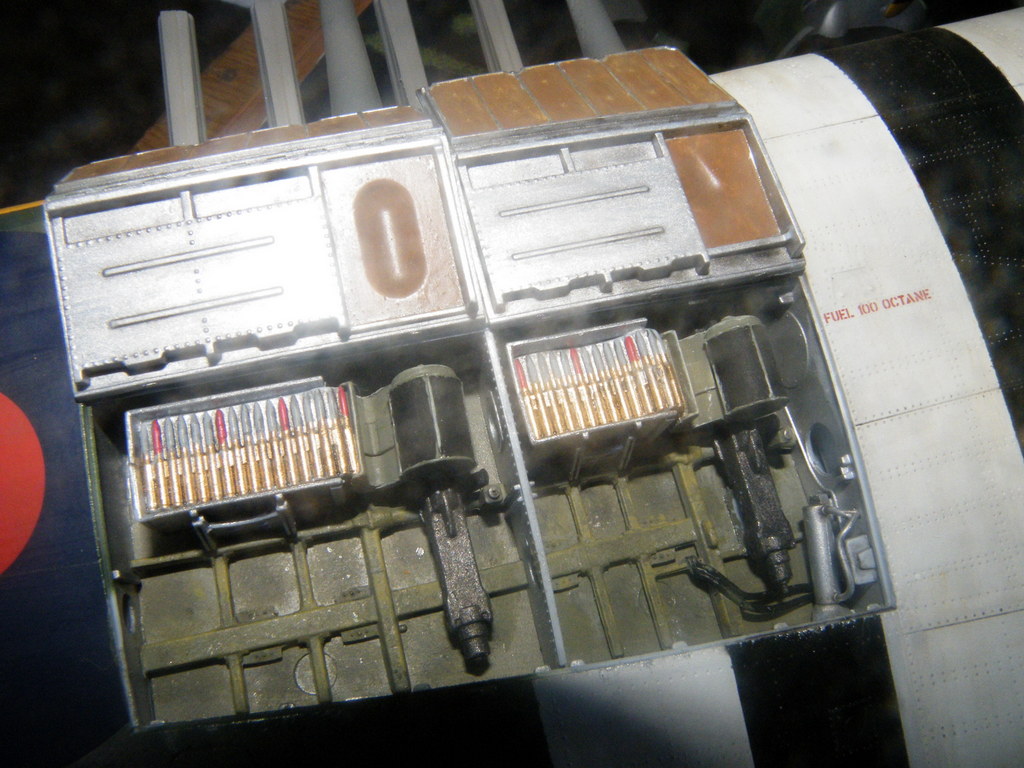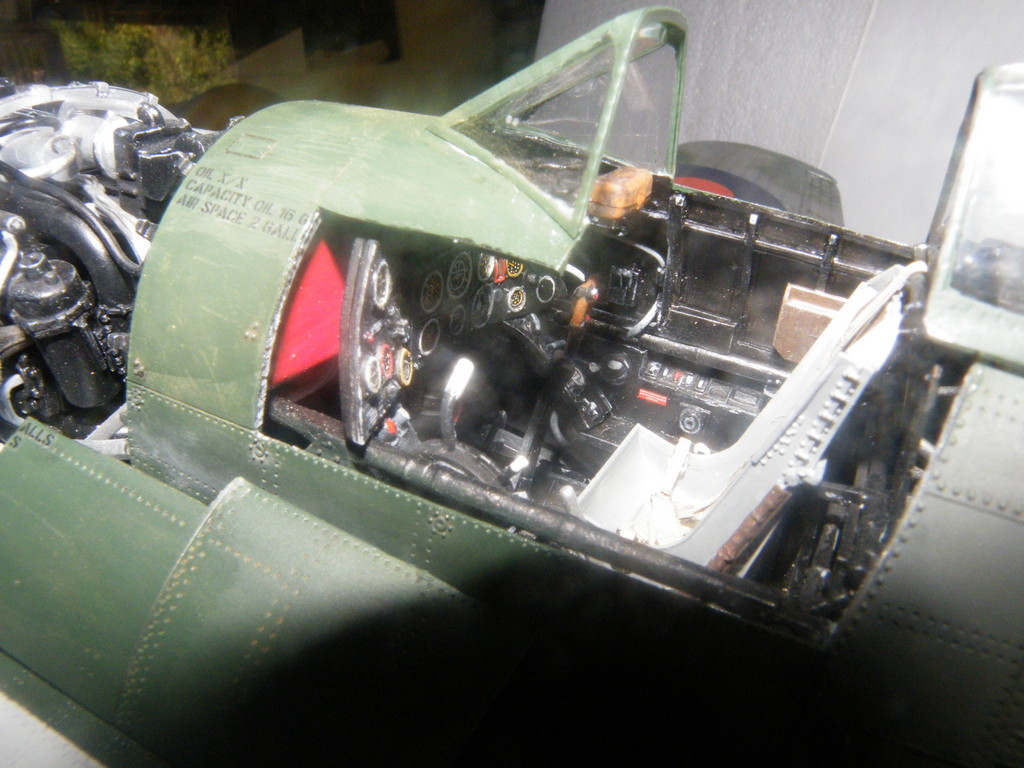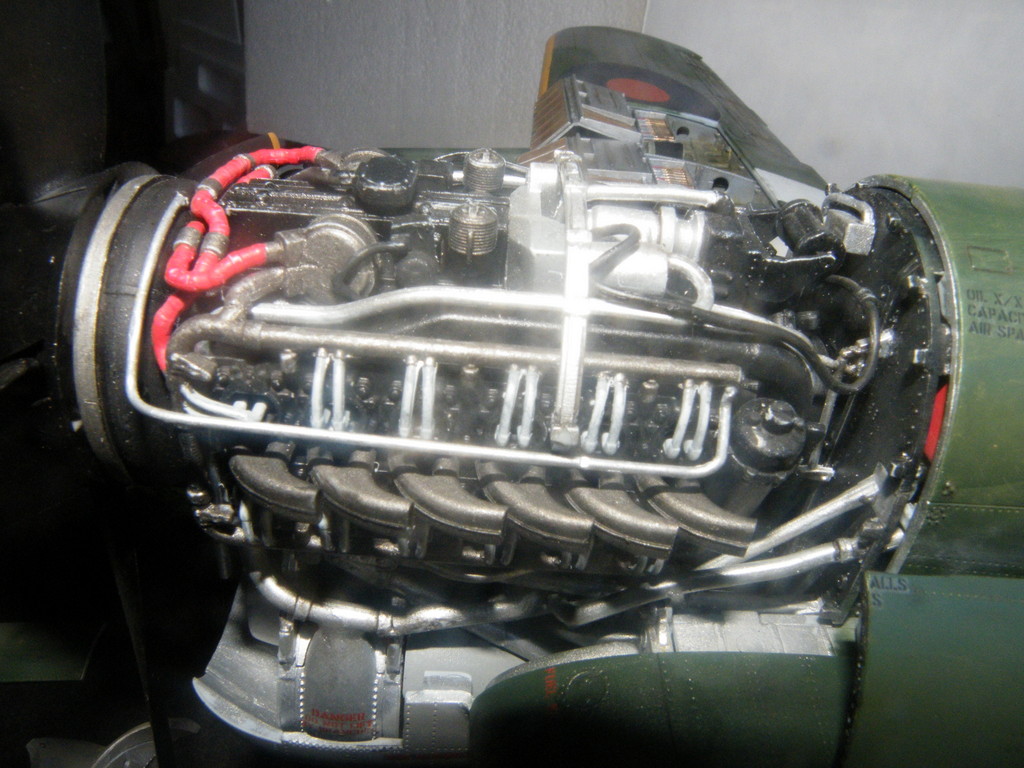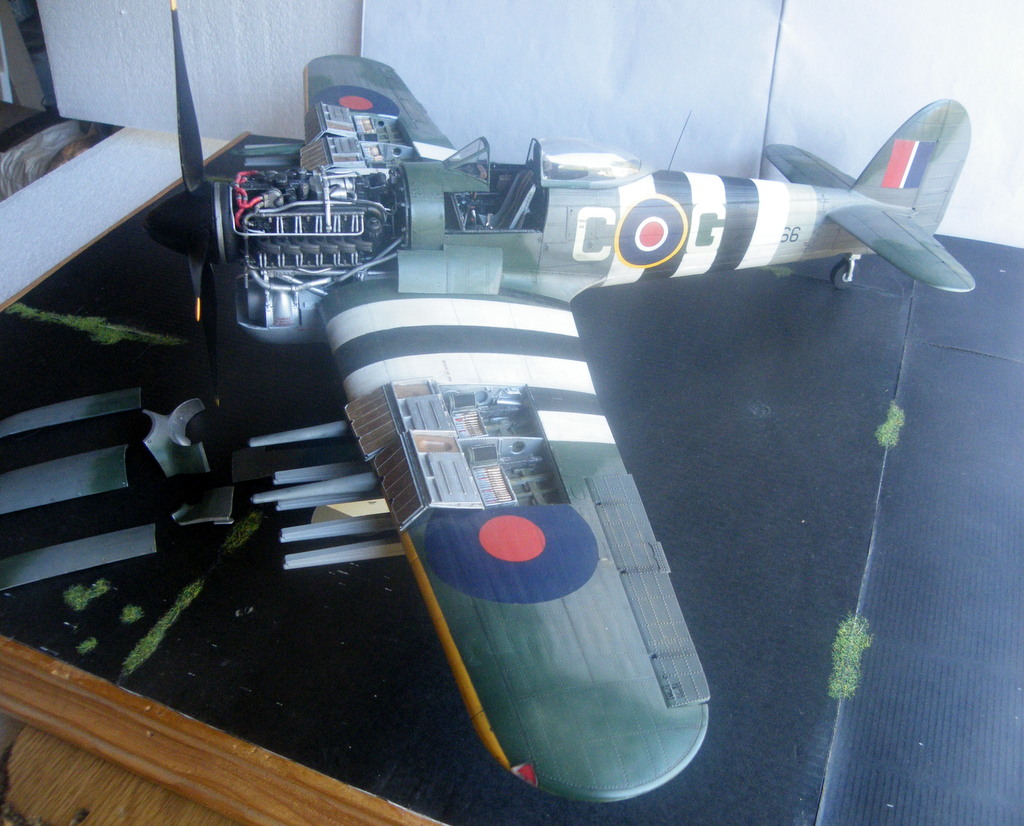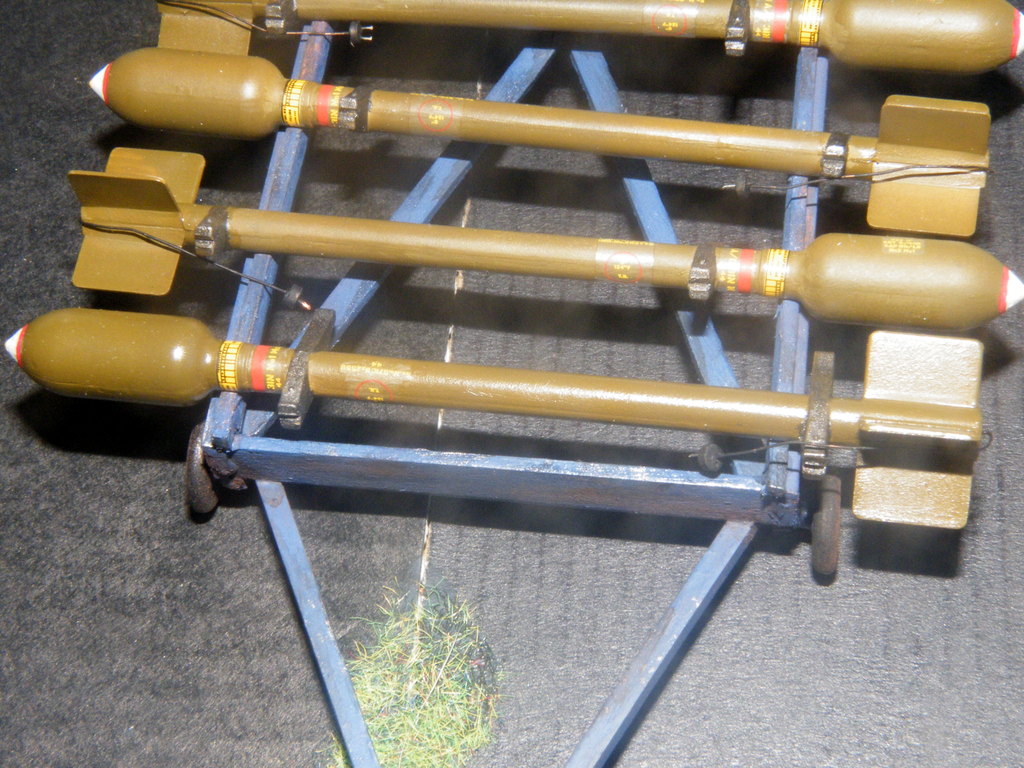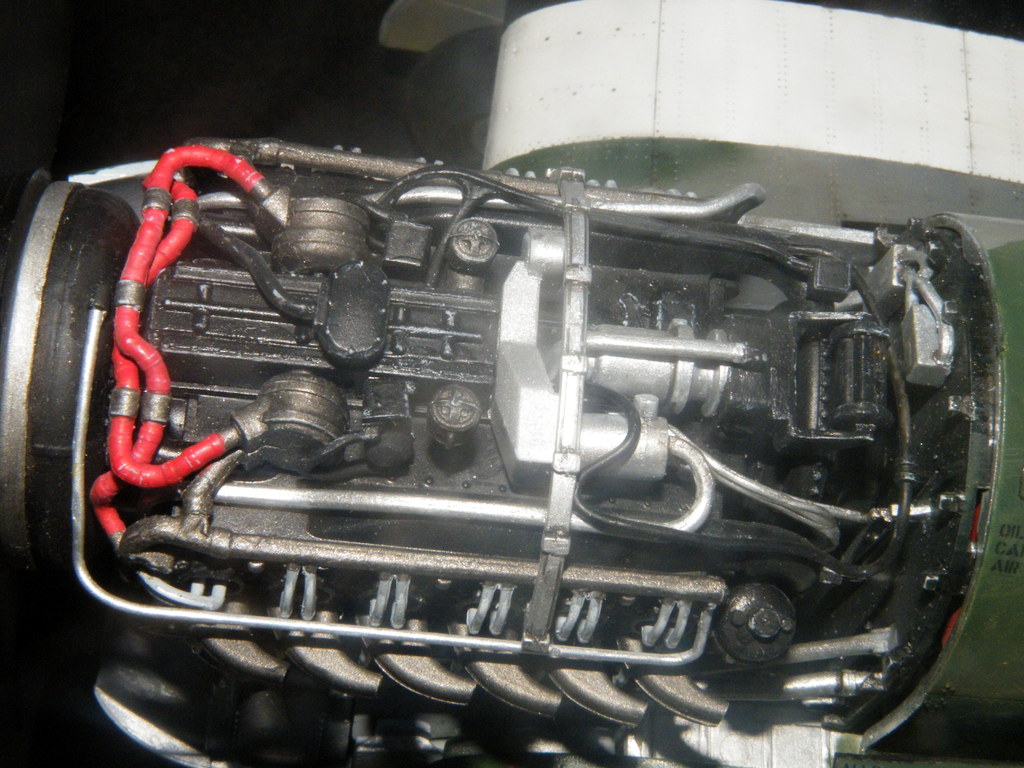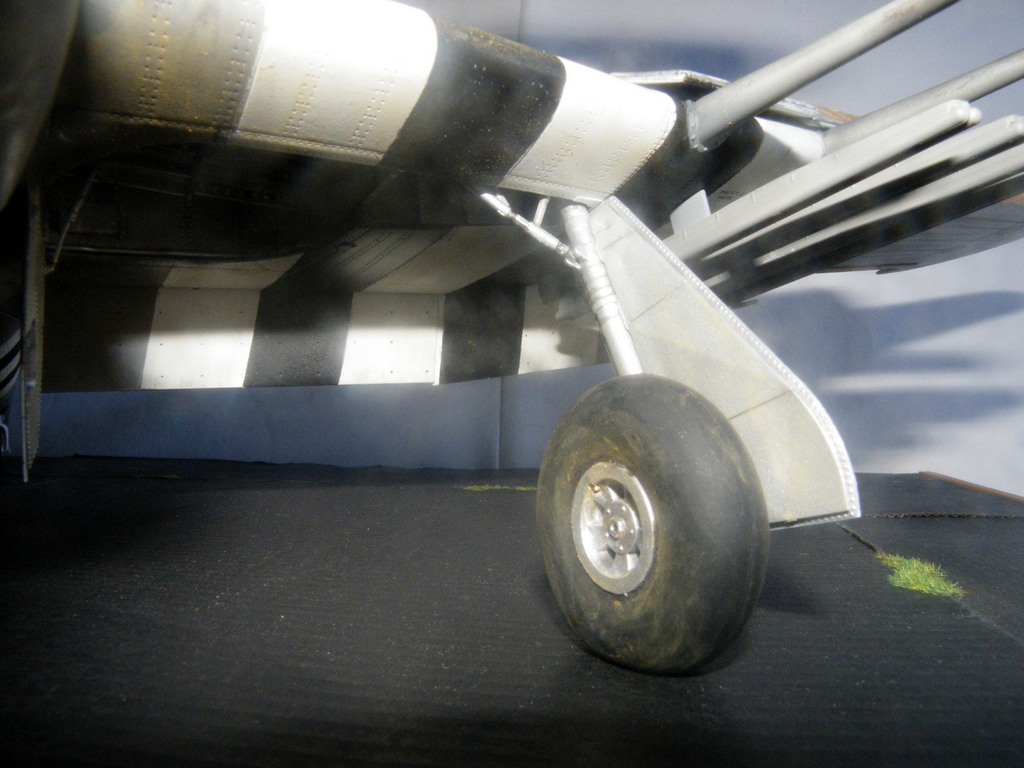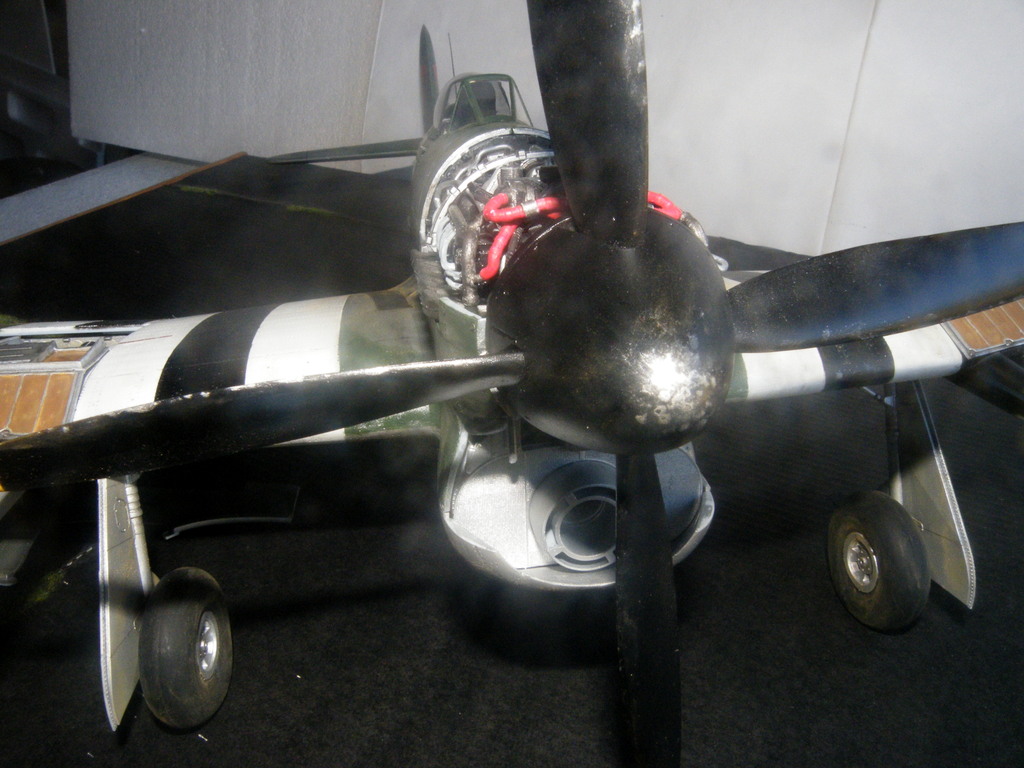Sur ce montage pas de kit d’amélioration tout est dans la boîte , les seuls rajouts sont les harnais. C’est une grosse pièce qui m’a pris un peu plus de 6 mois de travail. On this assembly, no improvement kit, everything is in the box, the only additions are the harnesses. It’s a big piece that took me a little over 6 months of work.

La boîte est prévue pour 3 possibilités : le moteur entièrement décapoté et les baies d’armement ouvertes , seulement le dessus du moteur et les baies d’armement, ou tout fermé. Dans l’option 2 , une partie des pièces moteur ne doivent pas être montées tout comme dans l’option 3. J’ai dû trouvé que c’était trop simple alors j’ai opté pour une 4ème option en ouvrant certains panneaux et en en fermant d’autres. Forcément, par la suite, certains joints n’étaient plus au top et il a fallu en reprendre certains, vu que dans cette configuration certaines pièces moteur n’auraient pas dû être montées, mais je voulais monter le maximum des 80 pièces que compte le moteur, c’est dommage de ne pas monter une aussi belle bête, tout comme renfermer complètement le cockpit qui en compte presque autant. Mais si l’on s’en tient au montage initial, tout s’ajuste parfaitement. L’armement est composé de bombes de 500 ou 1000 livres, plus deux modèles de rockets dont un doit être prévu pour l’autre version du Typhoon. Vu la configuration de l’appareil, je ne les ai pas mis en place mais j’ai décidé de fabriquer des chariots de transport en scratch pour ne pas les poser au sol et j’ai rajouté les fils d’allumage avec leurs broches sur les rockets. Quatre possibilités de décoration sur cette maquette et j’ai choisi celle d’un appareil pendant le débarquement en Normandie. Avion piloté par le Wing Commander Charles Green ; Win 121 ; B5 Le Fresne- Camilly , France , Juin 1944. Voilà , certains y trouveront peut être des défauts ou je ne sais quoi, mais moi il me plait bien et j’ai pris beaucoup de plaisir à monter cet oiseau . The box is designed for 3 possibilities: fully open engine and open armament bays, only the top of the engine and the armament bays, or all closed. In option 2, some of the engine parts do not need to be mounted just like in option 3. I must have found that it was too simple so I opted for a 4th option by opening certain panels and closing others. Inevitably, afterwards, some joints were no longer on the top and we had to take some of them back, since in this configuration certain engine parts should not have been fitted, but I wanted to fit the maximum of the 80 parts that the engine has, it’s a shame not to ride such a beautiful beast, just like completely enclosing the cockpit which counts almost as much. But if we stick to the initial assembly, everything fits perfectly. The armament is composed of 500 or 1000-pound bombs, plus two models of rockets, one of which must be planned for the other version of the Typhoon. Given the configuration of the device, I did not put them in place but I decided to make transport trolleys from scratch to avoid placing them on the ground and I added the ignition wires with their pins on the rockets. Four possibilities for decoration on this model and I chose that of a device during the landing in Normandy. Aircraft flown by Wing Commander Charles Green; Win 121; B5 Le Fresne-Camilly, France, June 1944. There you go, some might find flaws in it or something, but I like it and I had a lot of fun riding this bird.
topo, photos et montage : Mr Christian CHAUZAINT
Quelques photos pour illustrer le tout. Some photos to illustrate everything.

